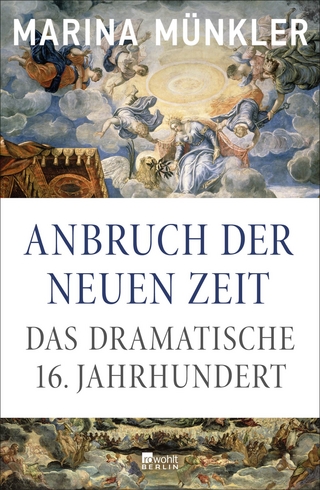
The War in Northern Oman
Muscat and the Sultanate of Oman, 1954-1962
Seiten
2021
Helion & Company (Verlag)
978-1-913336-33-2 (ISBN)
Helion & Company (Verlag)
978-1-913336-33-2 (ISBN)
This volume is covering one of the least-well-known conflicts in the Middle East, fought in Oman during the second half of the 1950s; and one of very few insurgencies that was successfully suppressed. As such, it provides a host of valuable 'lessons learned'.
The war fought in northern Oman from 1954 until the mid-1960s is almost completely forgotten. Even amongst contemporary military historians, it is considered less frequently than the subsequent - and widely published - Dhofar War. Though 'small', it was a conflict of crucial importance for the nation on the south-eastern side of the Arab Peninsula.
While usually thought to have been fought - and won - exclusively by special forces, capacity building, and training of native forces, a closer look reveals an entirely different picture. The victory and lasting peace were actually secured by a conventional military campaign dominated by offensive operations, followed by an entirely separate civilian development programme. The role of special forces was overemphasised - not only in regards of their relative number of operations, but also in regards of their impact - while the insurgency was suppressed by punitive means, and the capacity building remained limited during the war. It was only once offensive operations were completed that the development programme contributed to the lasting peace. This peace, in turn, would have been impossible without the conventional military campaign. As such, this 'small' conflict proved of crucial importance for the nation on the south-eastern side of the Arab Peninsula.
The War in Northern Oman provides a detailed account of the political dynamics which led to the eruption of violence, but foremost examines the use of force, the wider conventional military campaign, operations by special forces, military capacity building, and the application of soft power factors for civilian capacity building. Moreover, it emphasises the process of reconciliation and international engagement. Based on extensive research in official documentation, and including numerous personal testimonies, this volume - richly illustrated by photographs provided by veterans - provides exclusive coverage of one of very few wars in which a grassroots insurgency suffered a clear-cut military defeat.
The war fought in northern Oman from 1954 until the mid-1960s is almost completely forgotten. Even amongst contemporary military historians, it is considered less frequently than the subsequent - and widely published - Dhofar War. Though 'small', it was a conflict of crucial importance for the nation on the south-eastern side of the Arab Peninsula.
While usually thought to have been fought - and won - exclusively by special forces, capacity building, and training of native forces, a closer look reveals an entirely different picture. The victory and lasting peace were actually secured by a conventional military campaign dominated by offensive operations, followed by an entirely separate civilian development programme. The role of special forces was overemphasised - not only in regards of their relative number of operations, but also in regards of their impact - while the insurgency was suppressed by punitive means, and the capacity building remained limited during the war. It was only once offensive operations were completed that the development programme contributed to the lasting peace. This peace, in turn, would have been impossible without the conventional military campaign. As such, this 'small' conflict proved of crucial importance for the nation on the south-eastern side of the Arab Peninsula.
The War in Northern Oman provides a detailed account of the political dynamics which led to the eruption of violence, but foremost examines the use of force, the wider conventional military campaign, operations by special forces, military capacity building, and the application of soft power factors for civilian capacity building. Moreover, it emphasises the process of reconciliation and international engagement. Based on extensive research in official documentation, and including numerous personal testimonies, this volume - richly illustrated by photographs provided by veterans - provides exclusive coverage of one of very few wars in which a grassroots insurgency suffered a clear-cut military defeat.
Peter Shergold is originally from Walsall in the West Midlands, educated at the University of Manchester and Kings College London, Peter Shergold is a former Infantry Officer who fought in Afghanistan and Iraq. During his service he was seconded as a Loan Service Officer to the Sultan of Oman's Armed Forces for two years, and therefore has a detailed insight into the country's history and armed forces. This is his first instalment for Helion's @War series.
| Erscheinungsdatum | 25.01.2021 |
|---|---|
| Reihe/Serie | Middle East@War |
| Zusatzinfo | 83 photos, 6 maps |
| Verlagsort | Solihull |
| Sprache | englisch |
| Maße | 210 x 297 mm |
| Themenwelt | Geschichte ► Allgemeine Geschichte ► Neuzeit (bis 1918) |
| Geschichte ► Allgemeine Geschichte ► Zeitgeschichte | |
| Geisteswissenschaften ► Geschichte ► Regional- / Ländergeschichte | |
| Geschichte ► Teilgebiete der Geschichte ► Militärgeschichte | |
| ISBN-10 | 1-913336-33-6 / 1913336336 |
| ISBN-13 | 978-1-913336-33-2 / 9781913336332 |
| Zustand | Neuware |
| Haben Sie eine Frage zum Produkt? |
Mehr entdecken
aus dem Bereich
aus dem Bereich
Giordano Bruno - ein ketzerisches Leben
Buch | Hardcover (2024)
C.H.Beck (Verlag)
29,90 €
das dramatische 16. Jahrhundert
Buch | Hardcover (2024)
Rowohlt Berlin (Verlag)
34,00 €


